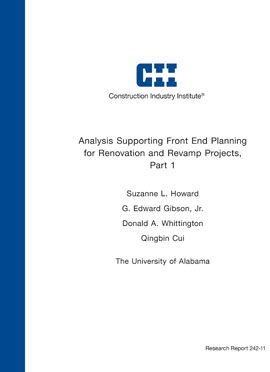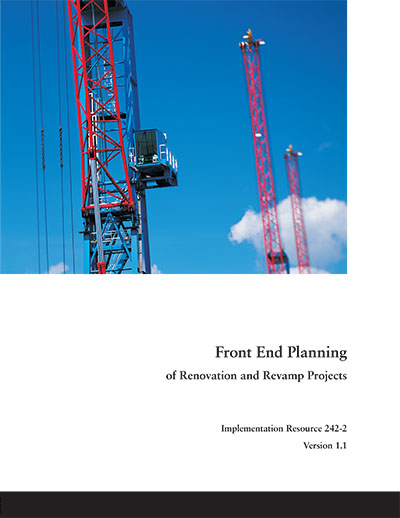
Analysis Supporting Front End Planning for Renovation and Revamp Projects, Part 1
Front end planning is focused on creating a strong, early link between the business or mission need, project strategy, scope, cost, and schedule and maintaining that link unbroken throughout the project life. This challenge is increased when modifying or renovating an existing facility due to unique characteristics of such projects.
A renovation and/or revamp (R&R) project is defined as a project that is focused on an existing facility. It includes the act, process, or work of replacing, restoring, repairing, or improving a facility with capital funds or non-capital funds. This may include the addition of structures and systems to achieve a more functional, serviceable, or desirable conditions, including improvements in the following areas; profitability, efficiency, reliability, safety, security, environmental performance, and compliance with regulations. R&R projects represents approximately 30% of all project spending by CII member companies.
R&R projects bring unique risks to the owner and contractor, requiring planners to address the interface with existing building uses or operations, unforeseen project conditions, and safety challenges. In some cases, R&R projects are being executed during a high intensity period of a shutdown/turnaround/outage (STO) requiring possible co-ordination with other projects, maintenance, and operating activities.
RT-242 research concluded that front end planning will improve the performance of R&R projects. Tools such as the Project Definition Rating Index (PDRI), Front End Planning Toolkit, and Shutdown/Turnaround Alignment Review (STAR) Tool can help in this regard. Technologies and techniques outlined on the Project Condition Investigation (PCI) cards will enhance the ability to discover potential issues causing risk. However, these tools and techniques alone will not ensure successful projects. When combined with sound business planning, alignment, and good project execution, the project team can greatly improve the probability of meeting or exceeding project objectives.



